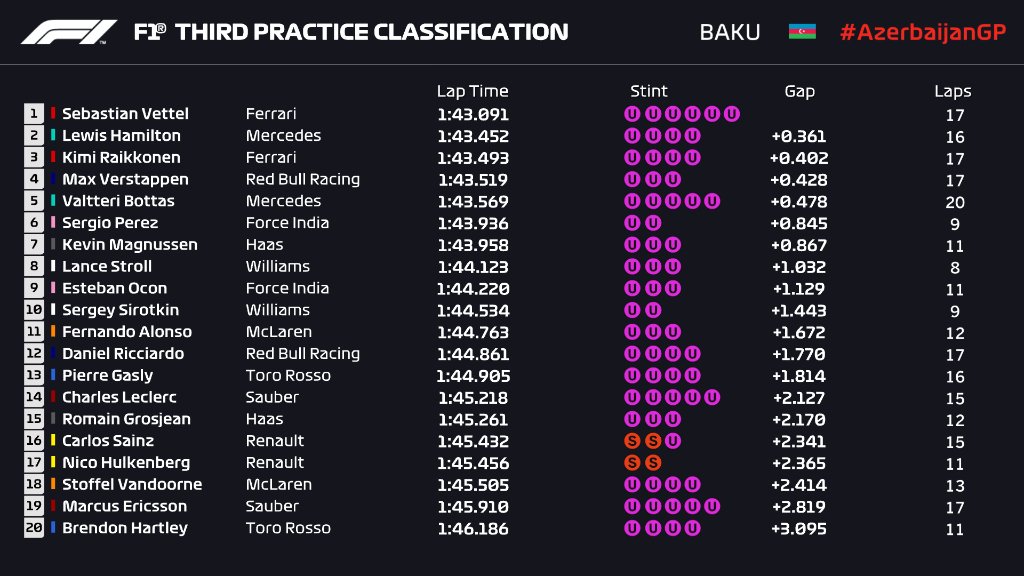Phil wrote: ↑28 Apr 2018, 13:32
When the teams made their allocations for these tracks, they had little information on how these tires were going to be on all these tracks. The trend has usually been that the softest is the best, especially for qualifying, because it gives you the fastest lap, even if they only last for 3 laps. Obviously, this sets you up for a disadvantage during the race when you need to start on them.
If you look at the trend of the last few races - race circumstance meant that it was better (strategically) to run a harder tire in your 2nd stint (or even in Q3 and the first stint of the race) in order have a better outlook for the race because sometimes, race position and stopping fewer is better than running faster but being stuck in traffic. Also, because these tires have a different temperature window they need to hit, it's important to know what you are getting into. For that they need tires. If they only have 2 or 3 sets for the entire weekend, it obviously sets them up at a disadvantage, because they need to test one in FP to know how long they last and what kind of performance they can extract, they may need one during Q2 (if they want to start on that tire during the race) and then it would of course be preferable to have an extra set during the race (like in China when Mercedes didn't) when a circumstantial safety car meant having one would have been key to win the race.
Phil, this discussion between Restomaniac and myself started from completely different reasons and morphed into this because of some arguments from his side. This is the post in question:
Restomaniac wrote: ↑24 Apr 2018, 06:24
aral wrote: ↑23 Apr 2018, 13:39
I would be reasonably sure that the Ferrari team are fully aware as to how their car uses each type of tyre, and their strategists will have chosen the tyres that in their educated opinion, will work best for them.
Ferrari will have had no clue how their car treats the new compounds in 'anger' when they decided on this weekends tyre compounds.
The point is, it's a street circuit and all teams brought 8+ SS compounds last year, which was the softest at the time. Now most of the brought 9+ compounds of softest available, some however brought 7 (Renault) and Pirelli stated the track is a bit smoother this year. To say that teams (specifically Ferrari, but I don't think he meant only them) have had no clue how tyres would react to being run on this track at the time of choosing is a serious underestimation of their knowledge, experience, understanding of statistical data and whatnot.
I'm not talking about differences between starting from pole and starting from second row, I'm talking about having a good understanding of what the track will be at the time of running. How your car behaves in simulator in different temperature conditions, how bad the wear should be, could it be like China (teams have certainly had in mind an option of running on Softs in Q2 and going all the way on Medium to the end, yet they chose a lot of Ultras) or could it be like Monaco (when Seb ran more than half a race distance on Ultras). The most important for teams is - can they make a good correlation between different compounds and use the data from, say, softest compound to have a good estimation on how the harder ones will behave. If they do, well, they don't need more than 2 sets of prime and option tyres for any weekend - and I will be very surprised if this turns out to happen on every race for the rest of the season.
I giggled reading Restomaniac's post, I'm not even close to understanding how F1 tyres are made and how they work - but I know what I don't know and I understand what teams can know before choosing their tyres for the weekend. Ferrari used a lot of time in 2016 to learn about 2017 tyres. That knowledge didn't evaporate and it seems Mercedes (for example) is still playing catch-up. As far as I'm concerned, this discussion should be put to rest and we should enjoy the Qualy ahead of us.




